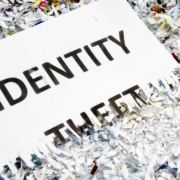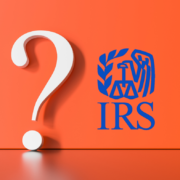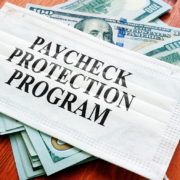The IRS recently updated its frequently asked questions (FAQs) on the Employee Retention Credit (ERC) and payroll tax deferrals under the Coronavirus Aid, Relief, and Economic Security (CARES) Act (P.L. 116-136). These provisions encourage businesses to keep employees on their payroll during the COVID-19 global pandemic. Although the FAQs cannot be relied upon as legal authority, they indicate the IRS’s thinking.
Borrowers With Forgiven PPP Loans Can Defer Payroll Tax Deposits
Section 2302 of the CARES Act provides that, through December 31, 2020, employers may defer the deposit and payment of the employer’s portion of Social Security taxes and certain railroad retirement taxes. Half of the deferred amount is due on December 31, 2021, and the other half is due on December 31, 2022.
On June 26, the IRS updated FAQ #4 on CARES Act payroll tax deferrals, confirming that an employer who has a Paycheck Protection Program (PPP) loan forgiven under the CARES Act is entitled to defer payment and deposit of the employer’s share of Social Security tax. The update to FAQ #4 follows the enactment of the Paycheck Protection Program Flexibility Act (P.L. 116-142), which eliminated the CARES Act provision that had prevented an employer from deferring the deposit and payment of its share of Social Security taxes after its PPP loan was forgiven.
Insights:
An employer that receives a PPP loan can defer payment and deposit of the employer’s share of Social Security tax not only while the PPP loan is outstanding, but also after the loan is forgiven.
The CARES Act payroll tax deferral provision essentially gives employers a two-year, interest-free loan from the federal government of approximately 6.2% of an employer’s payroll (up to $137,700 per employee, which is the 2020 Social Security wage base cap). Employers are not required to apply for or take any other steps to qualify for this “loan.” This payroll tax deposit loan is available regardless of whether the employer applied for a PPP loan or Main Street Lending Program loan.
Employee Retention Credit Updates
On June 26, the IRS updated several ERC FAQs. The ERC is a refundable tax credit equal to 50% of up to $10,000 in wages paid by an eligible employer whose business has been financially impacted by COVID-19. Each payroll period, employers may subtract the ERC from the employer’s portion of payroll tax deposits and retain (rather than remit) that amount. But if the employer does not have sufficient payroll taxes to fund the ERC, the employer can apply for a rapid refund of the ERC using IRS Form 7200.
Insights:
Although the credit is determined quarterly, only $10,000 of wages per employee can be counted for all calendar quarters (i.e., the credit is currently capped at $5,000 per employee).
Several proposals are pending in Congress that would expand the amount, scope and duration of the ERC. Further action on those proposals is expected between July 20 and early August.
We understand that the IRS generally sends employers a paper check within 13 days after processing the Form 7200. But due to the number of refund requests being processed by the IRS, it may take approximately 30 days from the date the Form 7200 was submitted to receive the refund check. The IRS has set up a special unit to solely handle processing these advance refund requests.
Below is a summary of the changes made by the updated ERC FAQs:
- FAQ #28 – Clarifies that a local health department order mandating a workplace closure for cleaning would qualify as “an order from an appropriate governmental authority” when determining if an employer qualifies for the ERC. FAQ #28 also now acknowledges that whether an employer’s business is “essential” may vary from jurisdiction to jurisdiction.
- FAQ #30 – Clarifies that the ERC would be available to an employer who operates both an essential and non-essential business and experiences a partial suspension of more than a nominal part of their non-essential operations due to a governmental shut-down order. FAQ #30 also says that an essential business may be eligible for the ERC if it has a partial suspension due to a governmental order that requires the employer to close for a period of time during normal working hours.
- FAQ #33 – Adds two new examples of ERC eligibility when an employer’s workplace is closed by a governmental order, but the employer can continue partial operations through teleworking. One of the new examples involves a physical therapy practice (which is partially shut down due to inability to access essential equipment), and the other involves scientific researchers (the workplace is shut down for those who do lab work, but not shut down for those who can work from home).
- FAQ #34 – Provides six examples of ERC eligibility for partial suspensions of operations where an employer’s workplace is closed by a governmental order for certain purposes but may remain open for other purposes or where the employer is able to continue certain operations remotely or with accommodations that do not significantly disrupt the employer’s business. FAQ #34 now includes examples of ERC eligibility for workplaces subject to social distancing guidelines, such as restaurants, retail stores (which are considered partially suspended if their physical location is closed, but they continue to do business on line), grocery stores and hospitals (which are considered to have a partial suspension of operations due to a governmental order that prevents them from performing elective and non-urgent medical procedures). But FAQ #34 states that if the impact of the governmental restriction on the employer’s business is only nominal, then the ERC would not be available. This is a facts-and-circumstances test. For example, FAQ #34 says that a grocery store’s operations would not be partially suspended because a governmental order requires closure of its salad bar and other self-serve offerings, since that change does not have more than a nominal effect on the grocery store’s business operations. Similarly, a large retailer would not have a partial suspension merely because customers must wait a short time to enter the store due to compliance with social distancing guidelines.
- FAQ #35 – Clarifies that an employer would be eligible for the ERC by reducing its work hours to comply with a governmental order requiring sanitation at certain intervals to reduce the risk of COVID-19. A new example concludes that a food processing plant would be eligible for the ERC if it normally operates 24 hours a day but has to close for five hours a day to conduct mandated deep cleaning.
- FAQ #46 – Establishes (for the first time) a “gross receipts” test for tax-exempt organizations to qualify for the ERC. The new test includes gross receipts from all operations, including all sales and amounts received for services, investment income, contributions, gifts, grants and membership fees or dues. To determine if a tax-exempt organization has had a significant decline in gross receipts for any quarter in 2020, it must compare the quarterly gross receipts from the 2020 calendar year to the same calendar quarter in 2019.
- FAQ #58 – Adds three new examples clarifying that employers cannot claim the ERC for amounts that are not “wages” for Federal Insurance Contributions Act (FICA) tax withholding purposes (even though employers can claim the ERC for qualified health plan expenses allocable to such wages). FAQ #58 now includes examples showing that an employer matching contribution to a 401(k) plan and employee pre-tax contributions toward dependent care assistance and qualified transportation fringe benefit cannot be the basis for ERCs.
- FAQ #79 – Confirms that employers who received PPP loans but repaid them by May 18 (under a special safe harbor rule) are eligible for the ERC.
- FAQ #88 – Confirms that payroll reporting agents may sign and submit Form 7200 to the IRS on behalf of a client.
- FAQ #90 – Clarifies that an employer and its third-party payer will each be liable for employment taxes that are due as a result of any improper ERC claim filed by the third-party payer.
- FAQ #92 – Clarifies that employers (not third-party payers) are responsible for avoiding a “double benefit” with respect to the ERC and the paid family medical leave tax credit under Internal Revenue Code Section 45S.




